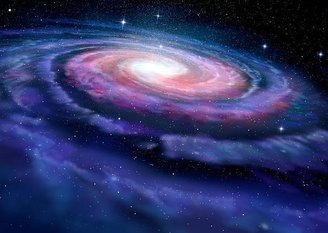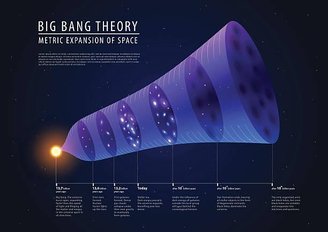The phrase “We are made of stardust” is not only poetic, it may be more scientifically accurate than we think. After all, chemical elements heavier than the hydrogen and helium found in our bodies were created inside stars through a process known as stellar nucleosynthesis.
These elements are found scattered throughout space and are remnants of the explosive death of stars, primarily supernovae. However, carbon and other atoms produced by stars do not drift in space. They are “called for new uses,” according to a team of scientists from the United States and Canada, who say in a press release.
In their study recently published in The Astrophysical Journal Letters, the team notes that elements such as carbon, oxygen and iron, originally forged in “star furnaces”, circulate within their galaxies in huge currents known as the circumgalactic circumference (CGM) type. related to Conveyor belts pushing material out of the galaxy and bringing it back.
Perigalactic environment and carbon transport
The first signs of the existence of a perigalactic environment appeared in the 1950s, when scientists noticed a large cloud of gas surrounding a galaxy. extending far beyond their stars and planets. They perceived it as a large, invisible halo extending hundreds of thousands of light years.
Years later, in 2011, the Hubble telescope clearly demonstrated the existence of this “halo” of gas around galaxies, suggesting the role of CGM in star formation, acting as a conveyor belt from which the galaxy would absorb materials to form. stars and planets.
In the new study, first author Samantha Garza, a PhD candidate at the University of Washington in the US, takes a new approach. “We can now confirm that the environment around the galaxy behaves like a giant reservoir of carbon and oxygen. And we propose that, at least in star-forming galaxies, this material falls back into the galaxy to continue the recycling process,” he says. release .
Retrieving material to and from the Milky Way

To understand the cycle of pushing material out and pulling it back into the galaxy, researchers used Hubble’s Cosmic Origins Spectrograph (COS). The instrument measured how light from nine quasars (extremely bright nuclei of distant galaxies) was affected by the CGM of 11 star-forming galaxies.
Space telescope readings showed that most of the quasars’ light was absorbed by very specific atoms in the CGM: carbon, and in enormous quantities. In some cases, this density extended up to 400,000 light-years into intergalactic space, equivalent to four times the diameter of the Milky Way.
Since there could be no life on Earth without carbon, this element, produced along with oxygen and iron in stellar furnaces, was recycled to form planets like ours. In other words, these atoms were combined as much as the iron in the Earth’s core, the oxygen in its atmosphere, and the carbon in our bodies.
Understanding how galaxies form

Like any active galaxy, the Milky Way continues to form stars and depends on a constant source of material. This source from the CGM in your environment ensures a constant supply of essential atoms, powders and gases. These materials in the CGM circulate as they are pulled in and pushed out as required by the formation of new stars and planets.
For Garza, this massive gas tank acts like a “giant train station,” constantly sending and receiving supplies. Heavy elements produced by stars are ejected into the environment around the galaxy in supernova explosions and then return to restart the star formation cycle.
But the authors plan to go beyond carbon. They also want to measure the composition of other elements within the CGM. A broader analysis could reveal important details about galactic halos and help understand the subject. How do galaxies form, evolve, and face future cosmic events?. Understanding this cycle is fundamental to uncovering some of the processes that shape the Universe on a large scale.
Do you have any questions? Tell us on our social networks and get the opportunity to share the article with your friends!
Source: Tec Mundo
I’m Blaine Morgan, an experienced journalist and writer with over 8 years of experience in the tech industry. My expertise lies in writing about technology news and trends, covering everything from cutting-edge gadgets to emerging software developments. I’ve written for several leading publications including Gadget Onus where I am an author.













